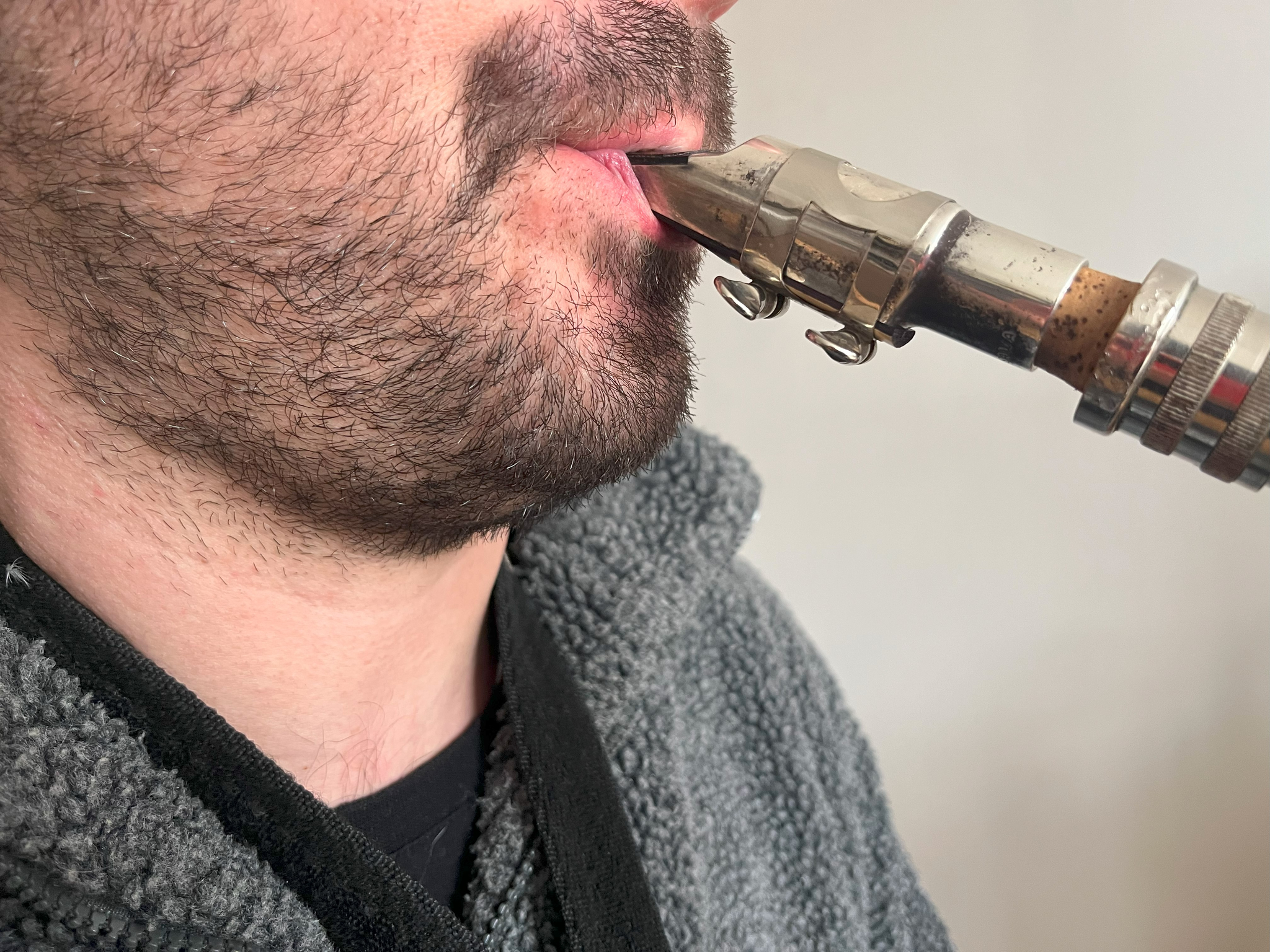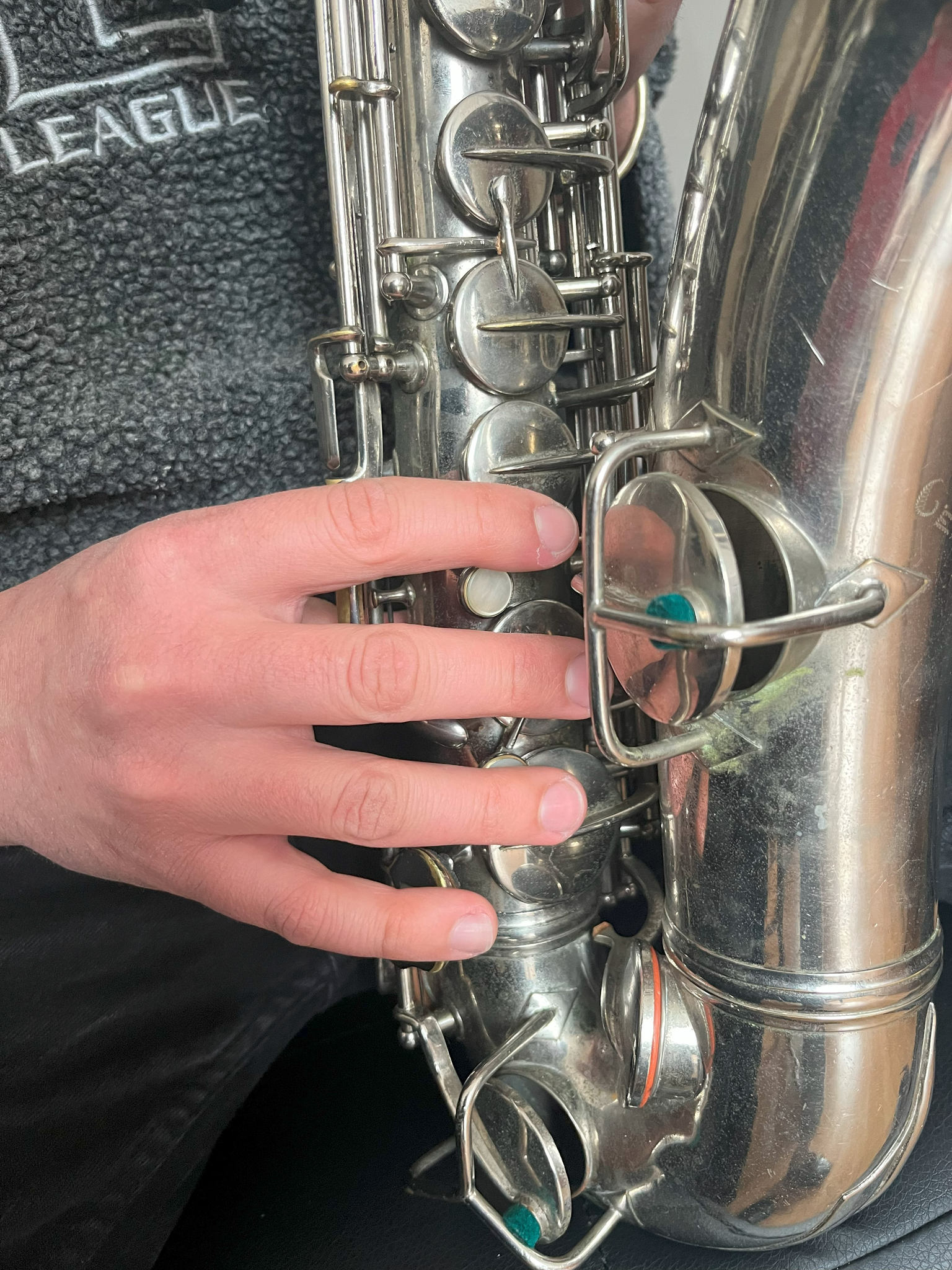Materials & Mouth Position
In my career as a saxophonist, I have played with different setups and materials (mouthpiece and reeds). However, the setup I have been using for the last few years is the one that allows me to achieve a sound similar to the zurna sound the most. In fact, I have been using a Yanagisawa metal mouthpiece with a tip opening 7. Metal mouthpieces are suitable for playing in ''f'' dynamics, have a lot of sound projection and are suitable for playing outdoors and with other loud instruments. In addition, a medium-high opening (7) also allows a high dynamic range, allows a wider vibrato and enables more control of the intonation with the bending technique. Fairly open mouthpieces are in fact more suitable, in my opinion, for achieving microtones.
As reeds I am using Vandoren or D'Addario Plasticover No. 2-2.5. I used to use harder reeds, but harder reeds generally have less vibration and, as they exert more resistance, are less suitable for producing microtones. Very light reeds, on the other hand, lead to the opposite problem. By exerting only a little resistance, the intonation is easily variable but in a way that is difficult to control, so it is very difficult to achieve exactly the intonation you are looking for. Reeds of medium hardness (No. 2-2.5), on the other hand, allow you to detune notes in a controllable manner and offer enough resistance to be able to play in ''f'' dynamics with good control of articulation and intonation.
Along with a change of materials, in recent years I had to make a major change in mouth setting. In the past, having studied classical music, I had a very rigid setting of the mouth muscles around the mouthpiece. The mouth setting on the classical saxophone involves putting a good portion of the lower lip between the teeth and the reed (Figure 3 left). This can cause wounds on the lower lip, which is why a piece of paper is sometimes placed between the teeth and the lip. In addition, all the muscles around the mouthpiece exert a lot of tension. The approach I have been moving towards lately is more used in jazz saxophone technique. One puts less of the lower lip inside the mouthpiece but makes sure to make the part between the reed and the teeth fatter so that it can create a ''cushion'' (Figure 3 right). In addition, all the muscles are generally more relaxed.
Figure 3: Classical embouchure (left), Jazz and Folk embouchure (right)
This results in the production of a less ''clean'' sound, but with a timbre more suited to jazz and folk music. In addition, this setting allows you to play louder dynamics and allows for more nuances on the notes, in terms of articulation and intonation.
Finger Positioning
The aesthetic of makam-music is very different from the aesthetic of Western music, and performing the repertoire requires different phrasing, different articulations and different ornaments. To perform this new type of phrasing and ornaments, I had to, over time, learn to use new hand and finger positions on the keypads. The standard hand position was not comfortable enough to perform certain passages and ornaments, especially trills and mordents. I have noticed that for certain passages I change my hand position, sometimes even moving my hand away from the body of the instrument and detaching my thumbs from the thumb rest pads. In this way I have a freer hand for quick passages and ornaments.
The position of the individual fingers over the keypads also has a great influence on the performance of fast ornaments. Tendentially, on the saxophone, the side of the finger resting on the keypad is the fingerprint side (Figure 4 left). During my study I sometimes found it useful to rest the tip of the finger on the keypad in order to have a faster and snappier action on the keys (Figure 4 right).
Figure 4: Common finger position (left), my personal approach (right)
A new technique, very different from the classical way of playing keypads, which I have developed over time, concerns the execution of lower mordents. It was necessary to develop this new technique because the way of performing mordents in many styles of makam-music is completely different from the classical way used in Western classical music. In Western classical music, the mordent is performed in a more relaxed and fluid manner, giving the three notes of the mordant a similar duration and the same dynamics (Ex. 13 left). In contrast, in many styles of music from the Balkan area and the Middle East, the mordant is performed in a very articulate, energetic and rhythmic manner. The grace note has a very short duration and only serves to divide the two equal notes instead of the tongue stroke (Ex. 13 right).
To execute a lower mordant smoothly (Ex. 13 left) one divides the finger movement into two moments: in the first moment the finger is lowered to obtain the lower note and in the second moment the finger is raised again to obtain the main note. In the technique I learned to use, however, the finger movement is only one. The finger goes down, closing the keypad and obtaining the note below, but afterwards the finger continues its stroke, still moving downwards but outside the body of the instrument. The keypad in this case reopens by itself thanks to the action of the springs. In this way, the ornamentation is much faster, energetic and articulate. This is a technique that can only be used on instruments equipped with keypads, so it cannot be applied on the zurna or clarinet.
The video shows a demonstration of how to perform the lower mordants shown in Example 13 according to the two different approaches, a fast example and a slow example are given for both.




